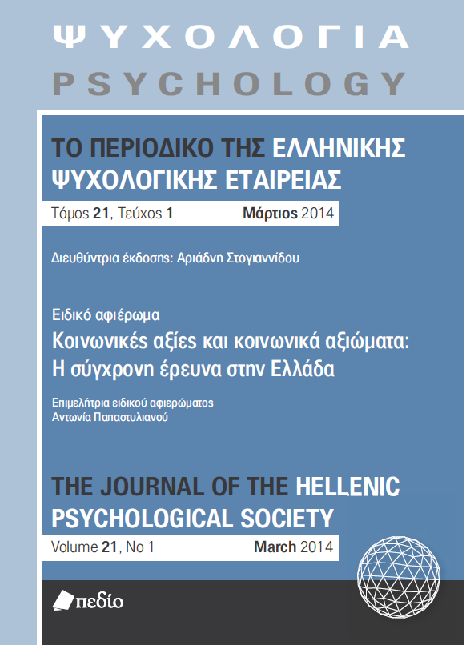Prosocial motivation: Pure altruism or psychological compulsion?

Abstract
Having as a starting point the dispute between the Empathy – Altruism Hypothesis and the Aversive Arousal Reduction Hypothesis, the present research focus on the study of the motives underlying prosocial behavior. Thus, an experimental process was designed in which male and female adults took part (N = 128). Participants first completed the Prosocial Tendencies Measure (PTM, Carlo & Randal, 2002) and the Toronto Empathy Questionnaire (TEQ, Spreng et al., 2009). Then, based on their answers, participants were assigned to eight groups and exposed to different experimental conditions (2 known – unknown x 2 in need of help – without need of help x 2 compel to receive help – absence of compel to receive help). Findings indicate that the level of empathy experiencing by the “benefactor” plays an important role in the performance of prosocial behavior. Nevertheless, the variable of familiarity with the person in need was found to be crucial in the performance of prosocial behavior as well as the need for help. Furthermore, findings suggest that the performance of prosocial behavior is a consequence of psychological pressure to the “benefactor” who, in turn, seems to use the performance of such a behavior as a means of psychological escape from a condition in which the request of help is salient.
Article Details
- How to Cite
-
Λαμπρίδης Ε. (2020). Prosocial motivation: Pure altruism or psychological compulsion?. Psychology: The Journal of the Hellenic Psychological Society, 21(3), 354–370. https://doi.org/10.12681/psy_hps.23503
- Issue
- Vol. 21 No. 3 (2014)
- Section
- SPECIAL SECTION

This work is licensed under a Creative Commons Attribution-ShareAlike 4.0 International License.
The journal PSYCHOLOGY adopts a Platinum open-access policy. Submission, processing or publication costs are waived by the Hellenic Psychological Society. Papers published in the journal PSYCHOLOGY are licensed under a 'Creative Commons Attribution-ShareAlike 4.0 International' licence. The authors reserve the copyright of their work and grant the journal the right of its first publication. Third-party licensees are allowed to use the published paper immediately after publication as they wish, provided they retain the defined by the license copyright formalities, regarding the reference to its author(s) and its initial publication in the journal PSYCHOLOGY. Moreover, any adjusted work should be shared under the same reuse rights, so with the same CC license.





